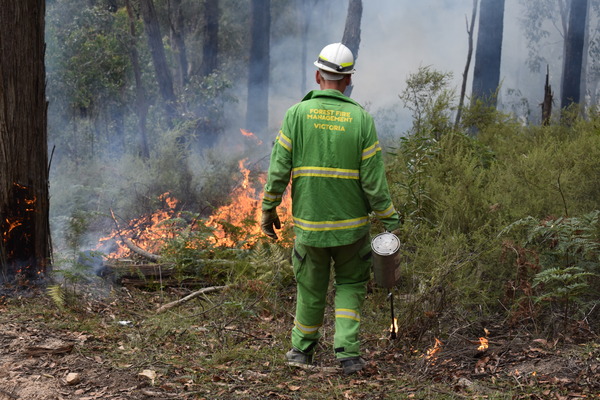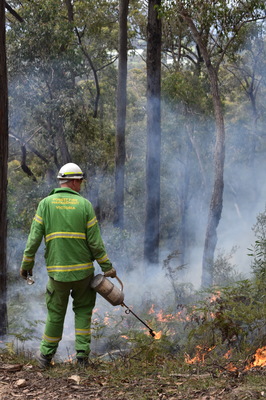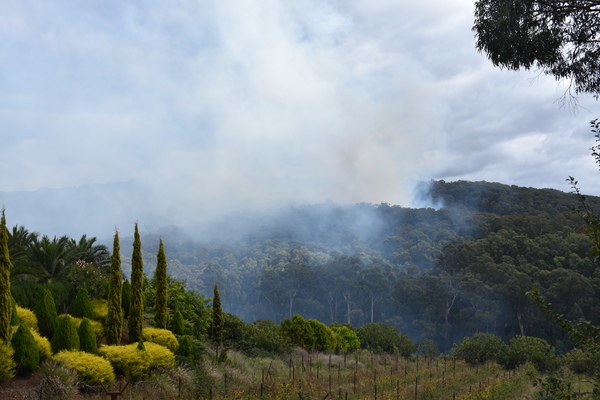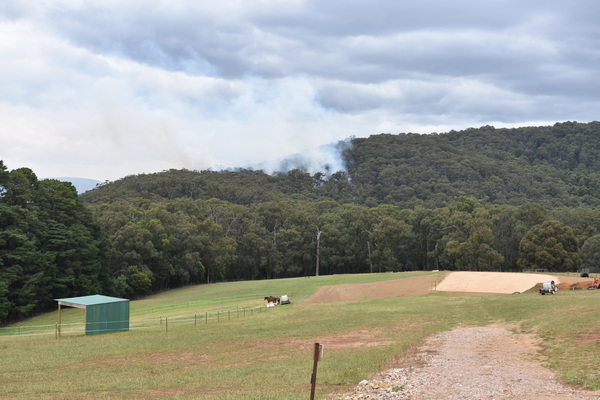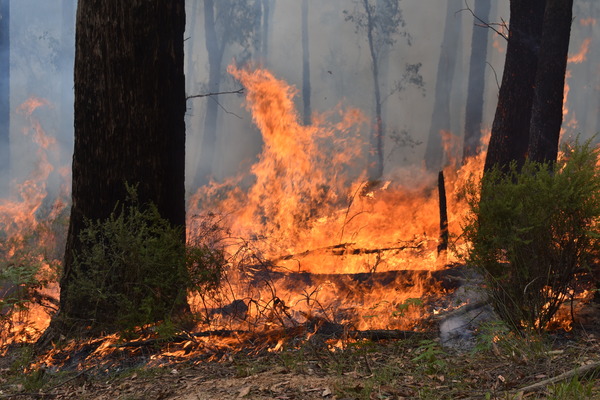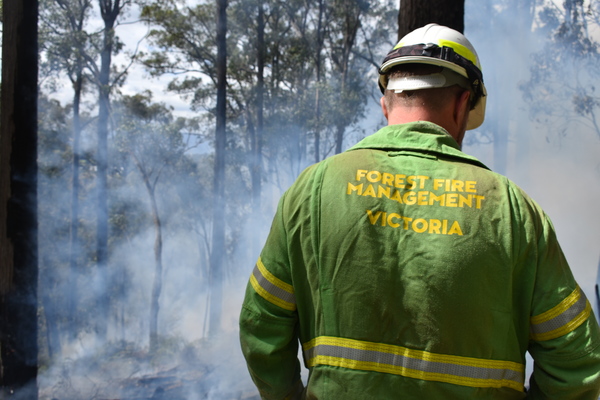By Romy Stephens
As Victoria’s planned burning program ramps up during autumn, many locals will be notified of burns in their area and might notice smoke outside their windows.
Across the Yarra Ranges, planned burning is of particular importance to protect densely populated towns located near thick bushland.
To gain insight into exactly how and why planned burns are conducted, the Star Mail attended a planned burn in Silvan on 20 March.
This 58 hectare burn on Melba Track was about three years in the making. It was conducted to help protect the surrounding community and a nearby asset, the Silvan Water Treatment Plant.
Forest Fire Management Victoria’s (FFMVic) senior fuel management officer Shane Vandenborn said the treatment plant is a “critical piece of infrastructure.”
“A lot of the water that comes into Silvan is from the Upper Yarra Catchment and other areas,” he said.
“Silvan is just like a holding dam, if you like, and this is where the water gets some chlorine treatment before it goes into the water supply.
“It supplies about 80 per cent of Melbourne’s water.”
A planned burn like the one at Silvan is also intended to reduce the size of bushfires and make them easier for firefighters to control, if one were ever to ignite in the region.
They do this by reducing fine fuel loads and bark hazards.
“All the fine fuels, the leaves and twigs that are as small as your little finger, that’s the stuff that carries the fire,” Mr Vandenborn said.
“The bark hazard is the key driver of fire spread and long-distance spotting, because the fire runs up the tree and, particularly if you’ve got a well-developed fire with a big smoke column, that can suck up the bark and embers and throw it many kilometers ahead of the main fire.
“We’re trying to blacken those trees and reduce that bark hazard from accumulating.”
The organisation of any planned burn in the state begins with the Joint Fuel Management Plan.
This is a three year plan which outlines where Forest Fire Management Victoria and the CFA intend to carry out fire management operations.
After a planned burn site is assessed and approved under this plan, it can move into the 12-month long operational planning stage.
This stage involves actually getting out on-site and determining if a burn is feasible, what the objectives of the burn are and value checking.
“When we nominate a burn, the first thing we do is check to see whether it’s feasible,” Mr Vandenborn said.
“What are the objectives of the burn, what’s the fuel type, where are the tracks and control lines and can we do it operationally?
“Once we go through that, we send it off to our biodiversity value checkers and they’ll look at things that are in the burn unit or around the burn unit and look at different species, flora and fauna.”
Mr Vandenborn said value checking is a vital part of a burn as it helps protect significant trees, animal nesting sites, historical and cultural artefacts and anything that needs to be protected from the burn.
These assets can be protected through clearing surrounding fine fuels, moistening the assets, or spraying retardant on them. Prior to the burn, crews are also briefed about these assets.
During the operational planning stage, each individual tree within the burn site is also assessed to determine any hazardous trees that might become unstable during a burn.
“Before we conduct a planned burn, we assess the trees on the edges of the burn to determine how sound they are,” Mr Vandenborn said.
“We are looking for defects such as large splits, broken branches, areas of decay, or evidence of disturbance to the tree roots.
“We then trim, remove or exclude those trees from fire on the day.”
There’s one more stage that needs to take place before a planned burn can even be conducted and that’s the community engagement process.
Mr Vandenborn said community engagement is a vital part of a planned burn and can be very time consuming.
“A lot of effort goes into trying to notify people with social media, trying to understand who the park users are or interested groups,” he said.
“During a planned burn there are numerous signs around the impacted area warning of smoke and to stay away.
“There are also crews patrolling and doing engagement on the ground from vantage points.”
FFMVic also has a notification platform called Planned Burns Victoria. This is an opt-in system where notifications can be customised to suit location and burn types.
The system notifies people via SMS or email when a planned burn is close to being ignited.
Once the engagement process is over it’s finally time for a planned burn to take place, which can be equally as time consuming as preparations.
The Melba Track burn, for example, was rescheduled six times in the past two years, mainly due to changes in the weather forecast and conditions not being dry enough.
According to FFMVic, Short-term weather influences the safe window for planned burning, and longer-term weather conditions impact the fuel moisture content of the areas planned for burning.
Over 80 per cent of planned burning in Victoria occurs in autumn because of ideal weather conditions.
Mr Vandenborn said that in winter, fuel is typically too wet to burn and the risk becomes too high in spring because it’s closer to the fire season.
“It’s all about the weather, how that affects the fuel and whether the fuel is available to burn or not,” he said.
Once weather conditions and fuel moisture levels are suitable, a planned burn can go ahead.
The planned burn in Silvan took about a day then crews patrolled the area for the following week to ensure it was under control.
Careful planning and management of planned burns are how the risk of them getting out of control is reduced.
According to FFMVic, less than 0.8 per cent of planned burns carried out in the last five years have gone beyond control lines and been declared bushfires.
To find out when and where planned burns are happening near you go to www.vic.gov.au/plannedburns or call 1800 226 226.

